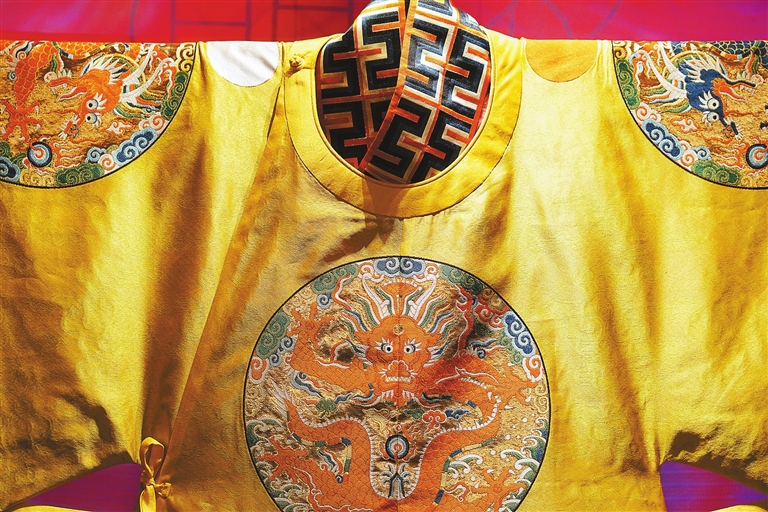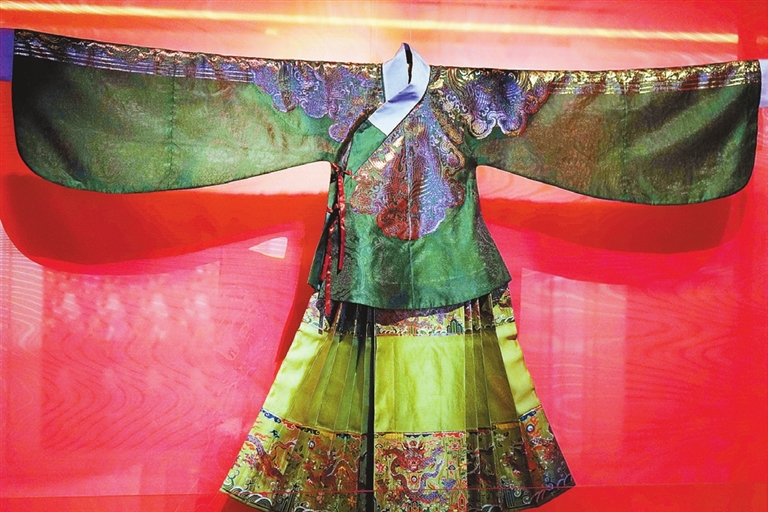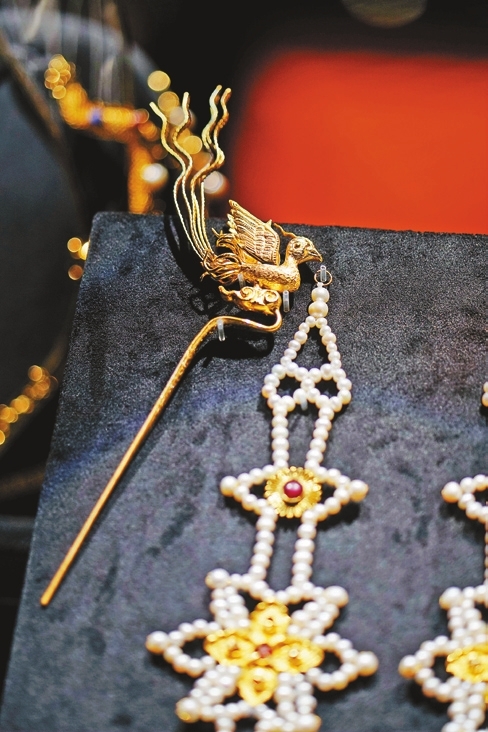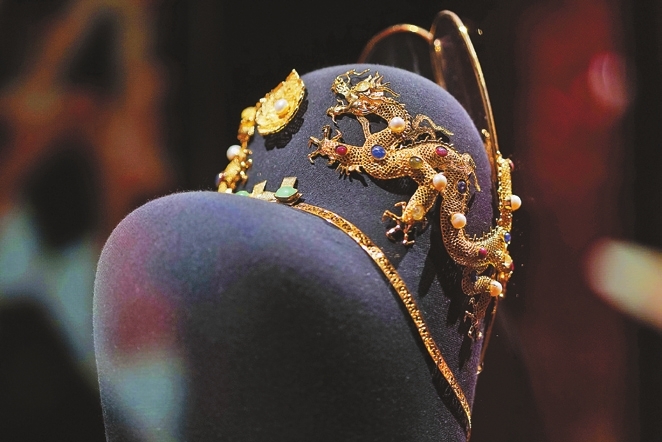



Aficionados of traditional Chinese clothing can enjoy a special experience “travelling back” to the Ming Dynasty (1368-1644) through a garment and jewelry exhibition at the Shenzhen Book City CBD Store in Futian District. The exhibition, themed “a dynasty of gorgeous clothing,” presents more than 50 Ming-style garments and jewelry and offers a look into the glorious culture of the era. One of the highlights of the exhibition is a black gauze cap, a reproduction of an imperial cap which once belonged to Emperor Wanli, the 13th emperor of the Ming Dynasty. The cap is inlaid with gems of various colors and adorned with two gold filigree dragons that are playing with a fire ball, a pattern often found in traditional Chinese clothing. This kind of cap is often an important accessory of an emperor’s clothing suitable for daily work. The original Emperor Wanli’s cap was unearthed at the Dingling mausoleum in Beijing. The feiyu pattern, or the pattern of wenyao fish, a flying fish depicted in the ancient Chinese book “Classic of Mountains and Seas,” is a symbol of nobility. No one was allowed to wear clothing with feiyu patterns, unless it was a gift from the emperor. Another featured item at the exhibition is a red gauze robe embroidered with feiyu patterns, a reproduction of a Ming Dynasty robe currently housed at the Confucius Museum in Qufu, Shandong Province. The techniques of brocade were highly developed and sophisticated in the Ming Dynasty. Zhuanghua brocade is a fine material that was often used in the clothing of imperial concubines as well as adornments and daily necessities in the royal court. A light green dress made with gold zhuanghua brocade with dragon and phoenix patterns on display allows visitors to appreciate how fine and exquisite the works made by imperial dressmakers are. Another must-see exhibit is a small gold box with a gold chain. The box is inlaid with rubies, sapphires and kallaite stones, and engraved with patterns such as lotus flowers and clouds. The original work, along with a hairpin inlaid with gems, is from the Nanjing Museum Administration in Jiangsu Province. Gems were symbols of nobility and wealth in ancient China. A set of hair accessories, inlaid with rubies and gems, tells the story of how Lady Mei, a concubine of an official in Nanjing, gained a high noble rank after her son succeeded her husband’s title of nobility. The exhibition also includes a “time travel” tunnel set against the background of reproductions of ancient Chinese paintings, installations that allow visitors to experience life in the Ming Dynasty, and documentaries on preserving cultural artifacts and renovating traditional filigree crafts. Dates: Until March 25 Hours: 10 a.m.-10 p.m. Tickets: 118 yuan per person, 166 yuan for two persons, 230 yuan for three persons Venue: North Area, Shenzhen Book City CBD Store, Futian District (福田区深圳书城中心城北区) Metro: Line 3 or 4 to Children’s Palace Station (少年宫站), Exit D(Lin Lin) | 
